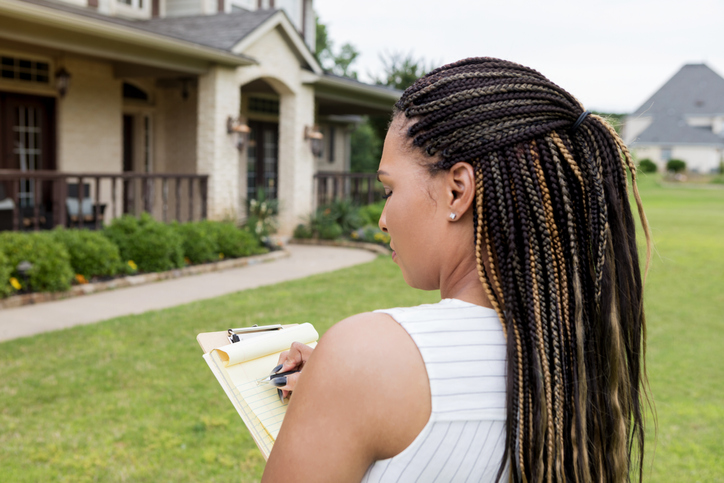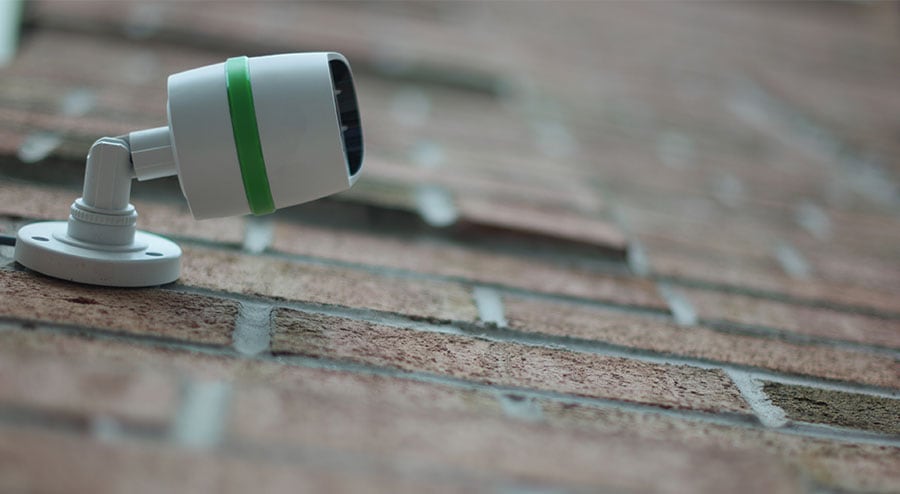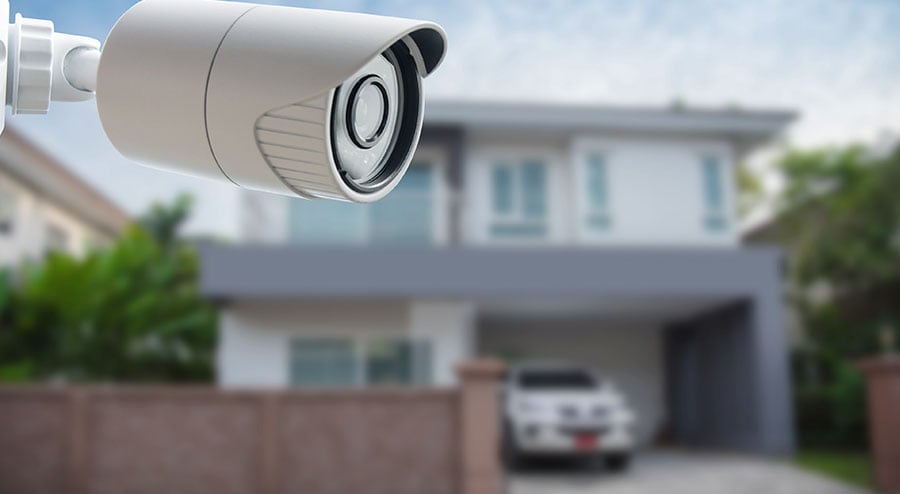Home security is a top priority for homeowners, and ensuring the safety of our living spaces requires a proactive approach. Home security audits provide a systematic and thorough assessment of vulnerabilities within residential properties, allowing homeowners to identify weak points and take necessary measures to improve safety. By evaluating various aspects such as doors, windows, alarm systems, lighting, and smart home devices, these audits empower homeowners to enhance their home’s security and protect against potential threats. In this article, we will explore the importance of home security audits, delve into common vulnerabilities, and discuss effective strategies to bolster home security, ultimately creating a safer environment.

Conducting A Home Security Audit
A home security audit is a systematic examination and evaluation of the security measures in place within a residential property. The purpose of a home security audit is to identify vulnerabilities and weaknesses in the existing security setup, enabling homeowners to take appropriate actions to improve safety and prevent potential intrusions or incidents. By conducting a thorough audit, homeowners can gain a comprehensive understanding of their home’s security status and make informed decisions to enhance its protection.
Steps To Assess The Vulnerability Of Doors And Windows
The goal is to make it as difficult as possible for potential intruders to gain unauthorized access to your home. By carefully assessing the vulnerability of your doors and windows, you can take appropriate measures to strengthen security and provide peace of mind for you and your family.
- Inspect door and window frames – Start by thoroughly examining the frames of all doors and windows in your home. Look for any signs of damage, rot, or deterioration that could compromise their structural integrity. Pay attention to areas where the frames meet the walls, as these are common weak points.
- Examine locks and hardware – Evaluate the quality and functionality of the locks and hardware on your doors and windows. Check that all locks are in good working condition, without any signs of rust or wear. Consider upgrading to more secure options such as deadbolts, which provide a higher level of protection against forced entry.
- Assess door and window materials – Consider the durability and resistance of the materials used for your doors and windows. Solid wood or metal doors are generally more robust than hollow-core doors. For windows, consider impact-resistant glass or laminated glass, which can withstand attempts at breaking or shattering.
- Check for proper installation – Ensure that all doors and windows are securely installed. Check for any gaps between the frame and the wall, as these can be exploited by intruders. Make sure there are no loose fittings or hinges that could be manipulated to gain unauthorized access.
- Reinforce weak points – Identify any weak points in the doors and windows. Reinforce them by adding security features such as door jammers or window security film. Reinforcing door frames with metal plates can also enhance their resistance to forced entry.
- Consider additional measures – Explore the possibility of installing security screens or grilles on doors and windows. These provide an additional layer of protection, acting as a physical barrier while still allowing airflow and visibility.
- Install peepholes and door viewers – Enhance your ability to identify visitors before opening the door by installing peepholes or door viewers. This simple measure can help you verify the identity of individuals outside your home and increase your overall security.
- Implement window locks – Install window locks on all accessible windows, including those on upper floors. Window locks can prevent intruders from easily opening the windows and gaining entry into your home.
Evaluating The Effectiveness Of Alarm Systems And Surveillance Cameras
To ensure optimal security, it is crucial to evaluate the effectiveness of your alarm systems and surveillance cameras. Start by testing the functionality of your alarm system. Activate the alarm and verify that all sensors, including motion detectors and door/window sensors, are in proper working order. Conduct regular maintenance checks to ensure they remain operational. Consider consulting a professional alarm system technician to perform a comprehensive inspection.
Assess the placement and coverage of your surveillance cameras. Review the areas they monitor and ensure they effectively cover vulnerable spots around your property, such as entry points and high-traffic areas. Confirm that the cameras are strategically positioned to capture clear images and provide a comprehensive view of your surroundings. If necessary, adjust camera angles or add additional cameras to eliminate blind spots.
In addition to placement, review the recording and storage capabilities of your surveillance system. Ensure that the cameras are recording properly and that the storage system is functioning correctly to retain video footage when needed. Regularly check the recording quality and verify that the system captures and stores footage for an adequate duration.
Consider integrating your surveillance system with remote monitoring options. This allows you to access live video feeds and receive real-time alerts on your smartphone or other devices. Remote monitoring services provide an added layer of security, enabling you to monitor your home from anywhere and receive immediate notifications of any suspicious activities or security breaches.
It is essential to keep up with advancements in alarm systems and surveillance technology. Regularly update your system’s firmware and software to benefit from the latest security patches and enhancements. Stay informed about new features and technologies that could further improve the effectiveness of your security system.
Regularly conducting home security audits and addressing vulnerabilities identified can provide peace of mind and ensure that your home remains a safe and secure haven for you and your family.
Assessing The Vulnerability Of Lighting And Landscaping
When conducting a home security audit, assess the vulnerability of your lighting and landscaping, as these elements can significantly impact the safety of your home. Start by evaluating your exterior lighting. Inspect outdoor lighting fixtures to ensure they are in good condition and provide adequate illumination. Pay particular attention to areas that are prone to shadows or blind spots, such as entrances, pathways, and dark corners. Consider installing motion sensor lights that activate when someone approaches, as they can serve as a deterrent to potential intruders and increase visibility during nighttime hours.
Turn your attention to landscaping. Assess the design and layout of your plants, shrubs, and trees. Overgrown vegetation near windows and entrances can create hiding spots for intruders, obstruct visibility, and make it easier for them to approach undetected. Trim back any overgrown hedges or shrubs that could provide cover. Consider planting thorny bushes or prickly plants near windows to discourage unauthorized access.
Ensure that your landscaping does not obstruct the visibility of your security cameras or impede the effectiveness of your lighting. It is important to maintain clear lines of sight for both your cameras and lighting fixtures, as this enhances their functionality and reduces potential blind spots.
Evaluate the lighting around your property’s perimeter. Adequate lighting along fences, gates, and other access points can discourage unauthorized entry and provide a sense of security. Consider installing well-placed lights that illuminate these areas and make them more visible from both inside and outside your property.
Take advantage of timers or smart lighting systems that can simulate occupancy when you are away from home. This can create the illusion that someone is present, discouraging potential intruders.
Securing Gates And Fences
In a comprehensive home security audit, it is important to address the security of additional access points like gates and fences. Begin by assessing their condition and ensuring they are structurally sound. Install secure locks and reinforce hinges to deter forced entry attempts. Evaluate the height and design of your fences to provide an effective barrier against intrusion. Consider adding anti-climbing measures to discourage scaling. Explore video intercom or access control systems for enhanced gate security. Regularly inspect and maintain gates and fences to address any wear or damage promptly.
Ensuring The Security Of Wi-Fi Networks And Smart Home Devices
In today’s interconnected world, the security of Wi-Fi networks and smart home devices is of utmost importance. During a home security audit, it is essential to evaluate and ensure the protection of these systems. Begin by securing your Wi-Fi network. Set a strong, unique password and enable network encryption, preferably using the WPA2 or WPA3 protocols. Regularly update the firmware of your router to safeguard against known vulnerabilities. Change default login credentials and disable remote management features to prevent unauthorized access.
Focus on the security of your smart home devices. Change default passwords on all devices and ensure they are connected to a secure network segment separate from the main network. Keep your devices’ firmware up to date by regularly checking for updates from the manufacturers. This ensures that you have the latest security patches and features to protect against potential exploits.
Consider implementing additional security measures for your smart home devices, such as enabling two-factor authentication when available. This adds an extra layer of protection by requiring a secondary form of verification, such as a code sent to your mobile device, before allowing access to the device or its settings.
Common Weaknesses In Home Security
Home security systems are not infallible, and it is crucial to identify any weaknesses or vulnerabilities that may exist. Common weaknesses include outdated or poorly maintained equipment, inadequate sensor coverage, or system malfunctions. Conduct a thorough inspection of your security system, including alarm panels, control panels, sensors, and communication devices. Test the functionality of each component and ensure that they are properly connected and calibrated. Look for any signs of wear, corrosion, or tampering. If you discover any weaknesses, promptly address them by repairing or replacing the faulty components.
Risks Associated With Smart Home Devices
While smart home devices offer convenience and automation, they can also introduce security risks. These devices, such as smart locks, cameras, thermostats, and voice assistants, connect to your home network and may be vulnerable to hacking or unauthorized access.
Ensure that you follow best practices when setting up and securing your smart home devices. This includes changing default usernames and passwords, keeping firmware up to date, and segmenting your network to isolate smart devices from sensitive data. Be cautious of third-party integrations and only install apps or services from trusted sources. Regularly review the privacy settings and permissions of your smart home devices to limit data sharing and protect your privacy.
Mistakes To Avoid In Home Security
Avoiding common mistakes is essential in maintaining a secure home. Some common errors include leaving doors or windows unlocked, sharing sensitive information on social media platforms, hiding spare keys in predictable locations, and neglecting to arm your security system when leaving the house. Ensure that all entry points are properly secured, develop a habit of regularly changing door lock codes or passwords, and avoid oversharing personal information online. Implement a comprehensive security routine and educate all household members about the importance of following security protocols.
Home Safety During Vacations Or Travel
When you are away from home, your property becomes more vulnerable to break-ins or intrusions. Unoccupied homes are attractive targets for burglars. To minimize vulnerabilities during vacations or travel, take proactive measures. Inform a trusted neighbor or friend about your absence and ask them to keep an eye on your property. Use timers or smart lighting systems to create the illusion of occupancy. Have mail and package deliveries suspended or arrange for someone to collect them. Avoid broadcasting your absence on social media, as it can alert potential criminals. Install outdoor security cameras and ensure that your alarm system is active and properly monitored.
Improving Home Security
Improving the safety of the home’s exterior is an essential step in enhancing overall security. Start by ensuring that the landscaping around your property is well-maintained. Trim bushes and trees near windows and entry points to eliminate potential hiding spots for intruders. Adequate exterior lighting is crucial for deterring criminals and increasing visibility. Install motion-sensor lights around the perimeter of your home, focusing on entryways and dark areas. Consider using timers or smart lighting systems to create the illusion of occupancy when you are away.
Securing Garage And Shed Areas
Locks are the first line of defense for your home, so it is crucial to strengthen them. Upgrade to high-quality deadbolt locks for exterior doors, as they offer enhanced resistance against picking and forced entry. Install a door reinforcement plate or strike plate to reinforce the area around the lock. Consider using keyless entry systems or smart locks that offer additional security features such as tamper alerts or access logs. Secure your garage and shed areas by reinforcing doors, adding secure locks, and installing motion-activated lights. Ensure that windows in these areas are not easily accessible or are reinforced with security measures.
Effective Deterrents Against Burglars
Implementing effective deterrents can significantly reduce the likelihood of burglaries. Visible security measures act as a deterrent and make your home a less attractive target. Display security signs or stickers to indicate that your property is protected by a security system. Install outdoor security cameras that are easily visible to discourage potential intruders.
Consider installing a burglar alarm system that is professionally monitored or self-monitored through a mobile app. Place decals or stickers indicating that your property is protected by an alarm system on windows and doors. Use timers or smart home technology to control lights, TVs, or radios to create the illusion of activity when you are away.
Proper Functioning Of Smoke And Carbon Monoxide Detectors
Smoke and carbon monoxide detectors are crucial for protecting your home and family from potential hazards. Test these detectors regularly to ensure they are functioning correctly. Replace batteries at least once a year or when low-battery alerts are activated. Install smoke detectors in every bedroom, outside each sleeping area, and on every level of your home.
Place carbon monoxide detectors near bedrooms and in close proximity to fuel-burning appliances. Regularly clean detectors to prevent dust or debris from interfering with their operation. Consider interconnected detectors, which trigger all alarms to sound when one is activated, providing early warning and increased safety.
Considerations For Multi-Story Homes
When it comes to securing multi-story homes, specific considerations need to be taken into account to ensure comprehensive home security. Start by focusing on window security on all levels of your home. Install window locks on accessible windows, including those on upper floors. Consider reinforcing windows with security film or laminated glass to increase their resistance to forced entry.
Pay attention to the security of the balcony and terrace areas. Secure balcony or terrace doors with robust locks and consider the installation of motion-sensor lighting to deter unauthorized access. Additionally, explore the use of security grilles or gates for added protection.
Staircase security is another important aspect. Install gates or barriers to secure staircases, preventing unauthorized access between floors. Implementing alarms or motion sensors can also be beneficial to detect movement on staircases during specific hours.
Strategic placement of surveillance cameras is vital in multi-story homes. Ensure that cameras cover all entrance points and vulnerable areas on multiple levels. Aim for clear images and comprehensive coverage to effectively monitor your home.
Develop a fire escape plan that includes all levels of your home, especially upper floors. Install fire escape ladders for bedrooms on higher levels, and regularly review and practice the plan with all household members. Additionally, consider installing intercom systems or emergency communication devices on each floor to enable quick and efficient communication during emergencies.
Conclusion
Home security audits are essential for assessing vulnerabilities and improving safety in residential properties. By identifying weaknesses, addressing common vulnerabilities, and implementing best practices, homeowners can enhance their overall security and create a safe living environment. From evaluating the effectiveness of alarm systems and securing entrance points to considering specific concerns such as cyber threats and vulnerabilities during vacations, a comprehensive approach to home security ensures peace of mind and protection for homeowners and their families. Regular audits and proactive measures are vital in mitigating risks and maintaining a secure home.




